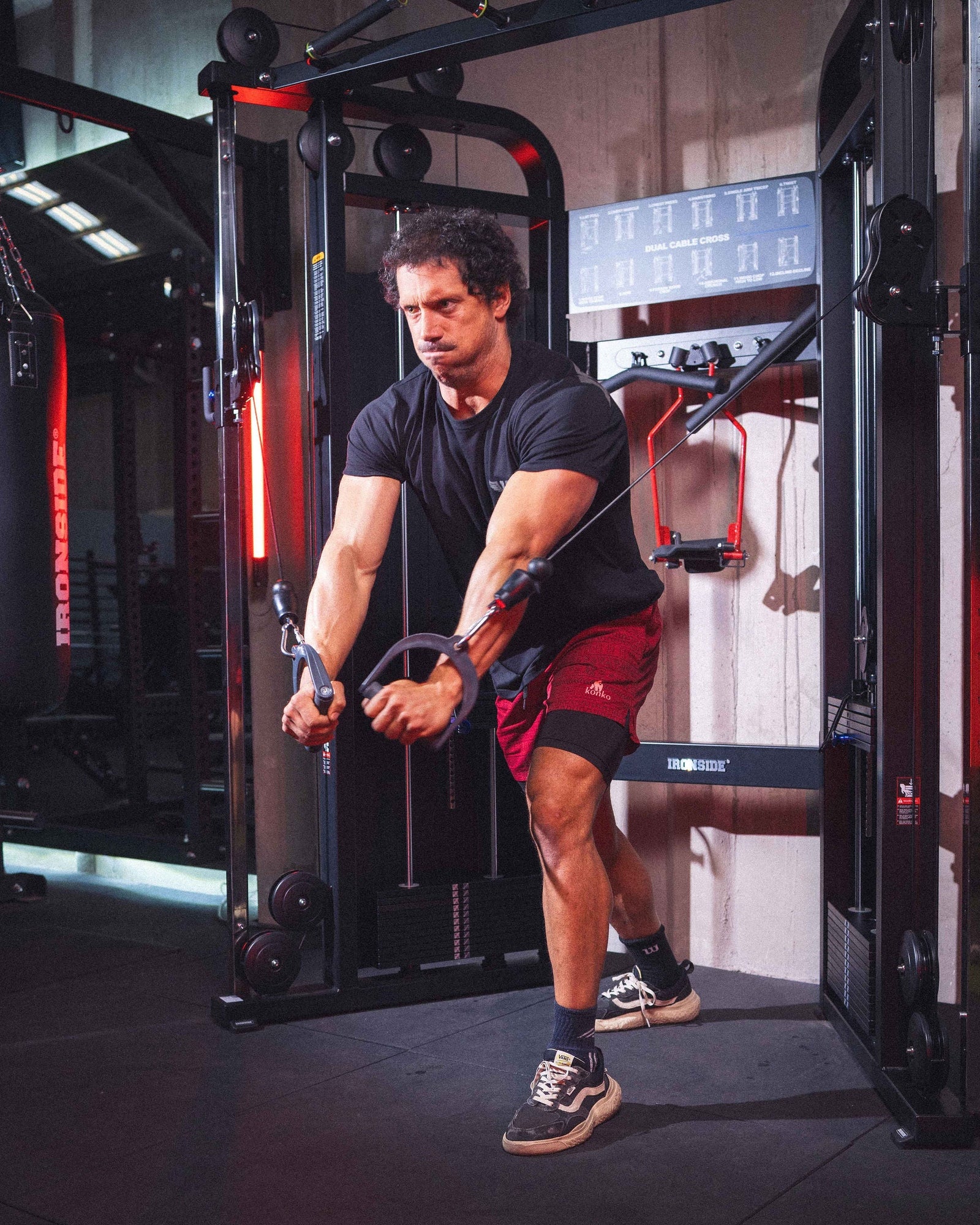How to Build Broader Shoulders Fast
Broad shoulders change the way you look and the way you feel. A wider upper body creates the classic V-taper physique, improves posture, and gives a powerful appearance. More than aesthetics, strong shoulders also provide stability and performance in every lift.

Why Broader Shoulders Matter
Think of a well-tailored suit: the fit at the shoulders defines the entire look. In training, wide shoulders give the same impact. They make the waist appear smaller, highlight strength, and project confidence. For many lifters, building broad shoulders is the difference between a good physique and a great one.
The Challenge of Genetics and Structure
Not everyone is built with naturally wide clavicles. For lifters with narrower frames, developing broader shoulders can feel frustrating. The truth is that bone structure plays a role, but it does not set the limit. With the right strategy, consistent training, and progressive overload, it is possible to create noticeable width and balance in your upper body.
The Muscles to Target
Lateral deltoids
The lateral delts are the key muscles that give the appearance of width. Too often lifters focus on pressing movements for the front delts while neglecting the side. To truly expand the frame, the lateral delts must be prioritized.
Posterior deltoids
Rear delts are essential for balance and posture. Neglecting them not only creates an unbalanced look but also increases the risk of shoulder injuries. A complete program will include rear delt work along with side delt isolation.
Best Exercises for Broader Shoulders
- Leaning lateral raises (dumbbells or cables) for targeted side delt isolation.
- Arnold press or overhead press for overall shoulder mass and strength.
- Face pulls for rear delt activation and joint health.
- Strict seated lateral raises to prevent cheating and maximize tension.
- Upright rows with a wider grip to recruit both delts and traps.
A balanced session should combine one heavy compound press with one or two isolation movements.
Training Volume and Repetition Ranges
Shoulders respond well to higher training volume. For optimal hypertrophy:
- 6 to 12 repetitions per set for most exercises.
- 3 to 6 sets per exercise.
- At least 10 to 15 weekly sets focused on the lateral delts.
- Mix heavy ranges (6-8 reps) with high-rep burnouts (15-20 reps).
- Occasional long sets of 20-30 reps for maximum pump and metabolic stress.
Frequency and Recovery
Train shoulders twice per week for most lifters. Delts are already involved in chest and back sessions, so total workload must be monitored to avoid overtraining. Recovery habits such as sleep, hydration, and proper nutrition are equally important as the sets you perform in the gym.
Nutrition and Lifestyle Factors
Muscle growth requires energy. Without a caloric surplus, shoulders will not grow. Aim for a balanced intake with sufficient protein, ideally around 2 g per kilogram of body weight daily. Sleep seven to nine hours per night to maximize recovery. Basic supplements such as whey protein, creatine, and omega-3s support both growth and performance.
Recommended Equipment
To execute these movements safely and effectively, the right equipment matters. Solid racks and cages support heavy presses, Olympic bars allow progressive loading, and dumbbells isolate each side evenly. Accessories such as resistance bands and cable stations add variety and help attack the delts from different angles.
Balance for a Complete Physique
While the lateral delts build width, the front and rear delts must not be ignored. A balanced approach ensures symmetry, aesthetics, and long-term joint health. A physique that combines size, proportion, and stability is more powerful and sustainable than chasing width alone.
Conclusion: The Ironside Method
Broad shoulders are not built overnight. They require consistency, progressive overload, and attention to every head of the deltoid. By focusing on lateral and rear delt activation, managing training volume, and aligning nutrition with your goals, results will come. With the right equipment and the mindset to stay disciplined, every lifter can achieve the classic wide-shoulder look.
Join the Ironside Nation and explore our full range of racks, bars, weights, and accessories designed for athletes across Canada.
FAQ: Building Broader Shoulders
What exercise builds shoulder width the fastest?
Lateral raises and their variations are the most effective for creating width. They target the lateral deltoids, which are primarily responsible for the V-taper shape. Combining them with compound presses like the overhead press maximizes both strength and size.
How many times a week should I train shoulders?
Two sessions per week is generally optimal. This allows you to apply enough volume without overtraining, since shoulders are also engaged during chest and back workouts.
Do I need heavy weights to get broad shoulders?
Not always. Shoulders respond to both heavy pressing and moderate-weight isolation work. Controlled form with lighter dumbbells on lateral raises can be more effective than swinging heavy weights with poor technique.
How long does it take to see visible shoulder growth?
Most lifters notice visible changes within 8 to 12 weeks of consistent training, proper nutrition, and recovery. The timeline depends on genetics, training intensity, and adherence to progressive overload.
What should I eat to support shoulder growth?
A slight caloric surplus combined with 1.6 to 2 grams of protein per kilogram of body weight daily supports muscle growth. Include whole foods, lean proteins, healthy fats, and carbohydrates to fuel training and recovery.

